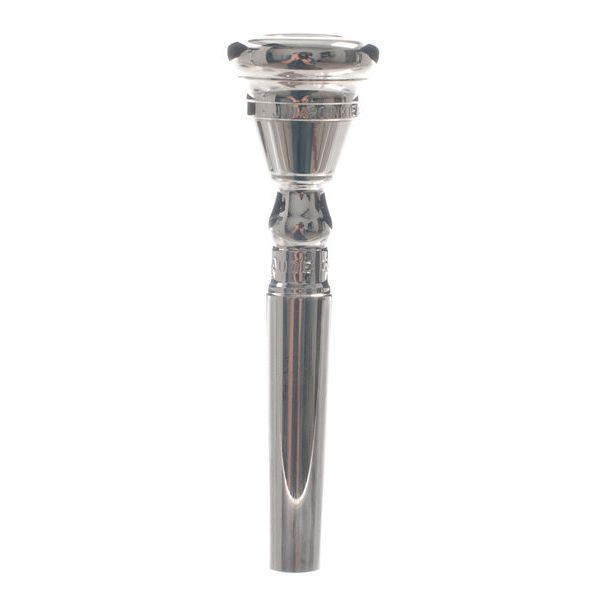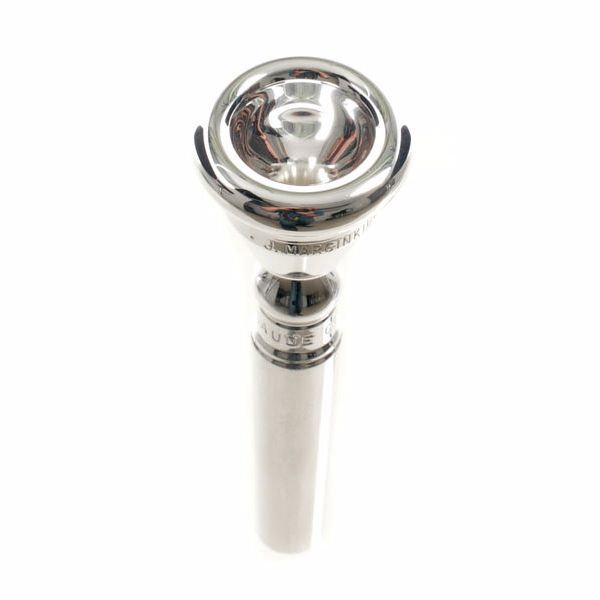Petite par son diamètre (eq 7 chez Bach) mais cuvette en V profonde et grain très gros.
Le bord est fin et arrondi, grande flexibilité, mais grand confort aussi malgré la finesse du bord.
C'est l'embouchure parfaite pour le développement du trompettiste car si on appuie trop : plus d'émission !
Justesse beaucoup plus facile à gérer qu'avec une 7C par exemple.
Son énorme qui passe facilement au dessus des riffs de Saxs et Trombones en Big Band.
Par contre au dessus du contre ré ou mi cela devient cher pour l'endurance et le son est typé cuvette profonde c.a.d plutôt rond et chaud dans le médium/grave , la brillance revient si on "envoie" dans l'aigu, les pianissimi sont superbes avec une belle résonance dès le plus faible niveau d'émission.
Pour le Big Band, en tout cas pour les 1ères et secondes je pense que la CG 3 (qui possède exactement le même diamètre et bord) est plus adaptée si on doit jouer dans l'aigu longtemps (endurance) à moins de s'appeler Wynton !
Le son est très malléable et on peut le "colorer" de nombreuses façons, c'est un régal en petite formation Jazz.
Elle est dérivée des anciennes embouchures de cornet et cor comme la Heim de Miles ou la Giardinelli de Clark Terry mais la grosse différence est le grain et la queue très ouverts.
Je possède aussi la C.G. Personal de Kanstul, les 2 sont très proches en termes de diamètre et profondeur de cuvette mais la K a une queue encore plus ouverte (plus, c pas possible, la fin de la queue couperait comme un rasoir...) et le bord de la K est légèrement plus plat mais très confortable aussi) le son de la K est un peu plus doux, moins métallique mais aussi puissant sinon plus.
Claude Gordon était un trompettiste et professeur très réputé et on comprend pourquoi il "collait" cette embouchure à ses élèves !
Cet avis est à considérer sous le jour d'un amateur éclairé et pratiquant 5 jours sur 7 minimum (non pro)











